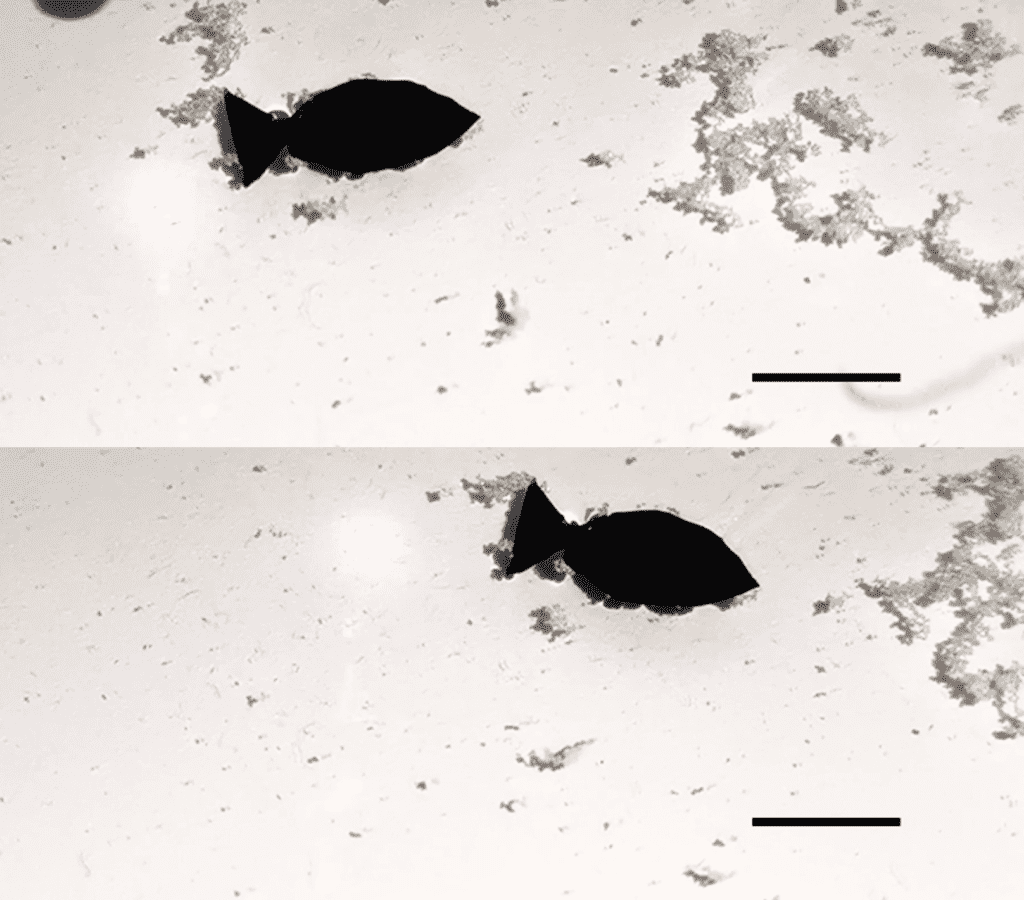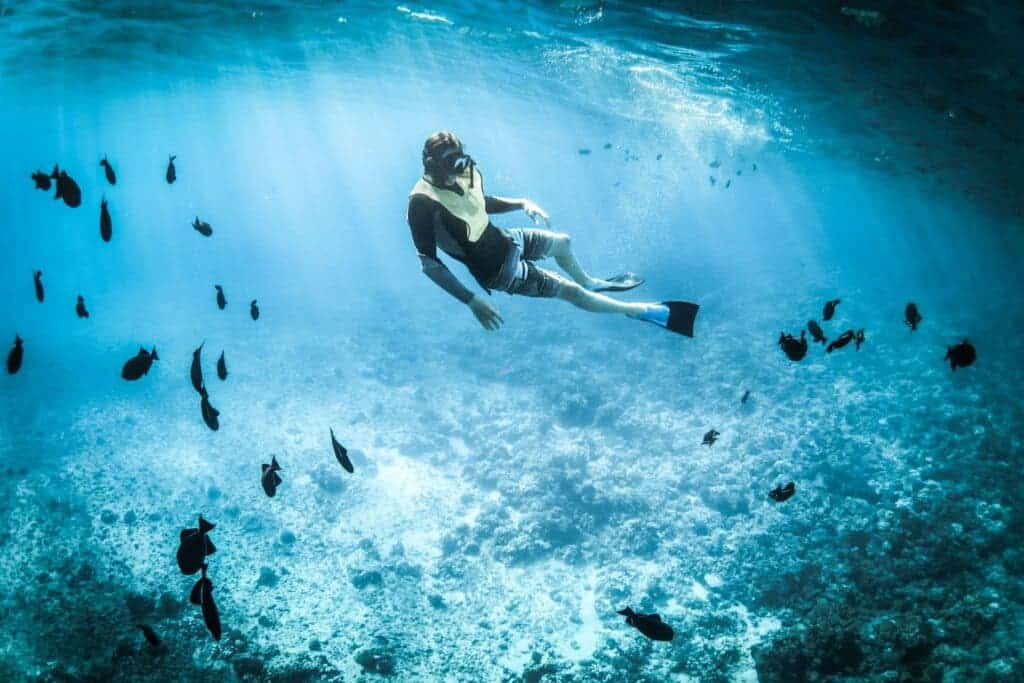Scientists from the Sichuan University in China have created fish-like swimming robots with a twist: these light-activated robots have the potential to get us rid of the increasing microplastic pollution in our waterways.

Plastic is everywhere. Plastic waste has become a serious threat to our environment and especially the seas and oceans, where it is accumulating releasing toxic chemicals and killing millions of animals every year. To make matters even worse, we’ve learned in recent years about the threats of microplastics, plastic pieces smaller than 5cm.
The problem is so bad that our oceans today may have more microplastics than fish and unfortunately, this harmful material is now making its way into our bodies. Microplastics are also extremely hard to clean out, because they’re so small. So researchers are increasingly looking at innovative ways to get rid of microplasic.
A team of researchers started wondering if it was possible to assign robots to collect microplastics from aquatic environments. They’ve now developed fast-swimming fish robots, each having with a size of about 15mm. These self-propelling tiny robots can absorb polystyrene microplastics from aquatic environments and transport them away to different locations. Here is an overview of this enticing technology.
The science that governs the fish-bots
Scientists have created robots to solve the plastic waste problem in the past as well but most of those experiments involved the use of soft robots. However, for various reasons, the soft robots often used to get damaged and stopped working after some time. Therefore, they couldn’t be used to conduct long microplastic cleaning drives in water bodies.
These new fish robots, on the other hand, are made from nanosheets that have physical properties similar to nacre — a strong, durable, and flexible material obtained from hard clam shells, also called the mother-of-pearl. The researchers modeled the structure of the nacre to create long-lasting fish robots. They combined a variant of the two-dimensional graphene and mixed it with a type of sugar molecules and prepared nanosheets to construct the robot.
While explaining the significance of nacre, the lead author of the study and professor at the Polymer Research Institute in Sichuan University, Xinxing Zhang told ZME Science:
“Here, inspired by nacre, we have developed a durable soft robot with the integration of versatile locomotion and function of microplastics treatment by a self-assembly bionic gradient structure. Nacre also has strong mechanical properties with high inorganic filling. So instead of making an artificial nacre, we just modeled the structure of nacre.”
A polyurethane latex mixture was then added to the nanosheet material and this solution gave rise to fish robots that could heal themselves and withstand the different challenges of aquatic environments. Unlike other soft robots, the fish robots can continue their microplastic picking operations even if they get damaged, thanks to their self-healing ability. Moreover, they can swim at a speed of 2.67 body lengths per second (15 x 2.67 = 40.07 mm per second) which makes them the fastest microplastic picking robot so far, per the researchers.
Zhang added:
“Our robots’ swimming velocity are higher than previously reported soft swimmers while featuring comparable body weight and to the speed of living neuston and nekton.” He further added, “The breaking and reorganization of dynamic hydrogen bonds permit the healing capacity at the molecular scale and enhance stretchability.”
Potential and limitations of the tiny fish robots
The tiny robots move using infrared light. The light rays facilitate heat transfer between the graphene nanosheets and lead to volumetric changes causing movement. This is why they are also referred to as light-activated fish robots. Their size, speed, and strength allow them to work in complex and harsh aquatic environments where no other man-made machine could be employed.

Therefore these tiny machines could play an important role in the elimination of microplastics from our water bodies. However, the researchers highlight that the fish robots still need to overcome various limitations before they could be used in the real world. Currently, the soft robots only integrate the function of the directional collection of microplastics on the water surface and the regulation of its size. All these functions need to be optimized and improved before large-scale application.
Professor Zhang and his team are currently working on a new material that could detect microplastic contaminants underwater and share live data online.
The study is published in the journal Nano Letters.


